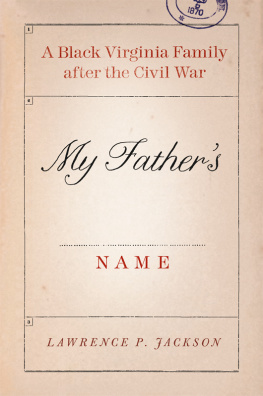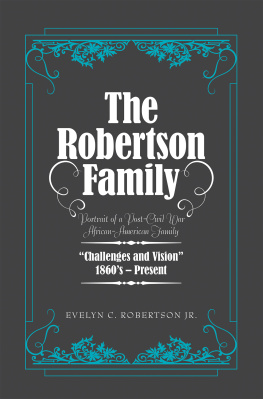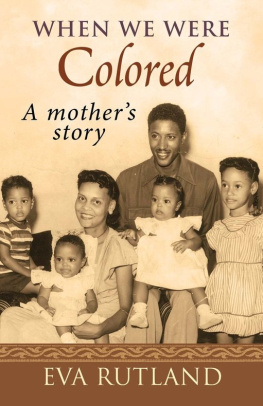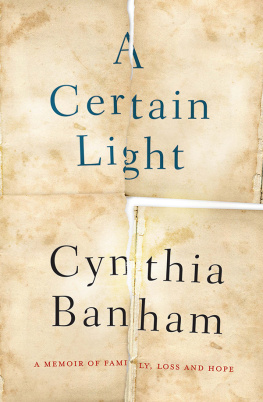Foreword

Despite its title, this book is no simple story about an odd narrow-built dwelling. Its about the family who lived in the house and the patriarch who built it.
Located at 175 Grand Street in Mamaroneck, New York, the three-story house, nestled between full-sized homes, is just ten feet wide. Known locally as the Skinny House, the curious structure was built by an ambitious black carpenter who owned a successful construction business in the Roaring Twenties.
Nathan Seely and the house he built are the foundation upon which his granddaughter, Julie Seely, tells the story of three generations of her family, both its high and lows.
Julie gives voice and personality to Skinny House, a property with a story to tell. Nathan built it with his own hands, using salvaged materials.
Its a story of a proud man who loses his business and dream house and builds Skinny House to shield his wife and two children from the calamity of the Great Depression. Julie reveals the travails that caused conflict between husband and wife and fissures between father and son. She shows the centrifugal force of the Depression on one struggling American family.
Julies research began in 2010 with the discovery of a 1925 brochure of her grandfathers business. She knew next to nothing about the man. He died when she was a child. In a quest to learn more, she exhumed secrets buried by her father, Tom, who was estranged from his father. The two men never reconciled. A physician by training, Julie missed the chance to practice generational healing while her father still lived.
Gary Rawlins, journalist and family friend
Introduction

This is a story about a family whose lives were affected by historical events. Although I have the advantage of hindsight and access to research by experts, I am no historian. However, I feel compelled to include historical context in many chapters to gain insight into why my grandfather Nathan Seely, an African-American contractor in Mamaroneck, New York, and his son, Tom, my father, came to make certain decisions they felt were best for their families at the time.
Nathans story spans two polarizing decades in American historythe prosperous times of the Roaring Twenties and the devastating years of the Great Depression. In the 1920s, times were good for my grandfather and his business. The national unemployment rate was low and family incomes were stable. Credit was easy to secure and bank loans were abundant, even for a few black folks. The construction industry was robust and its profits high.
A short decade later, toward 1929 and for most of the 1930s, America was on its knees. The financial ruin of thousands of businesses fueled massive unemployment. The mood of the country was one of desperation and isolation where every man had to fend for himself. African-Americans were worse off than whites. According to Cheryl Greenbergs book To Ask for an Equal Chance , blacks had already been living in poverty in most sections of the country prior to the Depression. They became the last folks hired and the first fired, even for the most menial jobs.
My father, Tom, grew up during this very turbulent period. The central part of this book is about his adolescent life and times when he lived in a very skinny house my grandfather built on Grand Street in Mamaroneck. The story transitions to my fathers life away from Mamaroneck during the 1940s when he pursued an education, a career, and marriage. In his mind, however, the memories of living in the Skinny House were constant companions.
The last few chapters covering the 1960s and 1970s are an attempt to understand how the legacies of my grandfather and father have influenced my life growing up in Baltimore, Maryland.
The primary resources used for this book were limited since many of the family members I write about died many years ago. My grandparents Nathan and Lillian, parents Tom and Doris, and my paternal Aunt Sug are all deceased. I was fortunate, however, to spend much of the past five years interviewing my mother about her experiences living in the Skinny House before she died in January 2016. She had much to say about my grandfather, his family, and about being married to my father. Throughout this journey I became an explorer seeking the truest story possible, considering a lot of the intimate details I obtained about my grandfather were obtained secondhand.
Objective sources for this book included Westchester County land records, Gannett and New York Times newspaper articles, United States Census reports, draft records, and genealogy research from Ancestry.com. In the 1920s and 1930s, the US Census records were handwritten, sometimes illegible, and fraught with misspellings of names and inaccurate ages. Some of the recorded land transfers were confusing and required much time and effort to sort out. I elicited the assistance of a New York state historian-researcher to affirm the sequence of land purchases by Nathan and his brother and business partner, my great-uncle Willard Seely. Why was this so important to me? It was clear that investing in real estate was very important to Nathan and Willard. The least I could do was aim to be as accurate as possible in retelling their story.
Through each decade, the legacies of my grandfather and father have traveled with me. As an adult, my life has been easy compared to the road they traveled. I always assumed that I would go to college, that I would have a nice home, and that I would have financial security. My grandfather and father made no such assumptions that they would have a good life. They struggled for everything they had. I have come to understand that I owe my good life to their hard work and perseverance. I am grateful also for the odd-looking house my grandfather built, now nicknamed the Skinny House, for it has provided a window into their past lives and has inspired a new generation of history seekers within our family.














